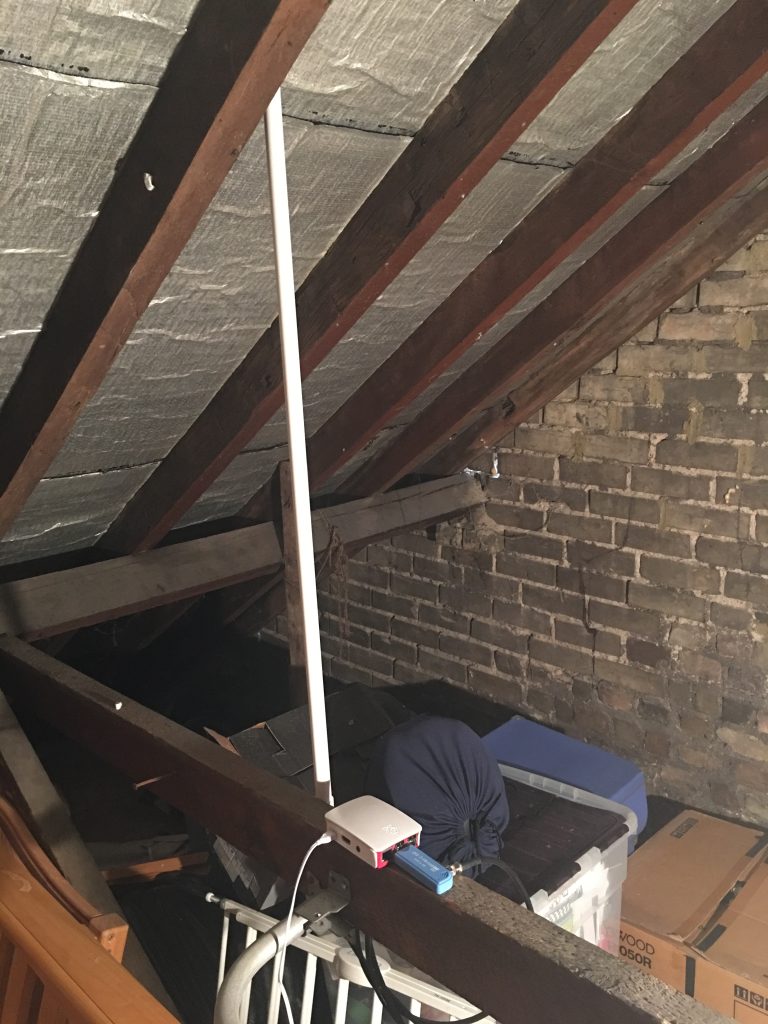A short while ago my proper aerial turned up for the ADS-B system I have running in the loft. See this communication and this one also. This new aerial means I should have a better receiver based in the loft. It is currently picking up 47 aircraft flying within range and the Virtual Radar Server gives the following as a webpage output:

There is a sidebar which connects to the web and gives me information about the selected aircraft and the others flying within range. This does not show all aircraft, only those with an ADS-B transponder. I also supply my data to a MLAT service for 360Radar.

The above photo shows the system in the loft. The white stick is a surround for the aerial. This connects to a dongle which connects to a Raspberry Pi3 and this, in turn, connects wirelessly to my home network.
I know you really want to know about the splat so here they are. Firstly one from before the new aerial.

Here’s the latest, all altitudes are in one colour.

The range is a bit better with two very odd pips into central France. The following is a colour one for you mammals out there.

The next thing is to try installing a purpose made ADS-B USB stick. After that I think I will stop. It appears to be one of those “who can get the best splat” things online and I’m not interested in taking part.
